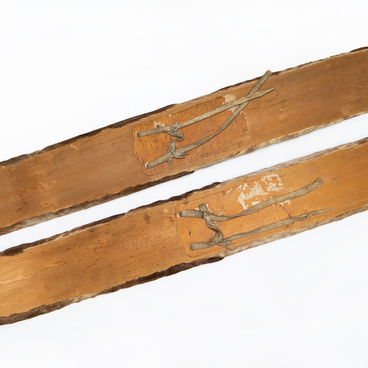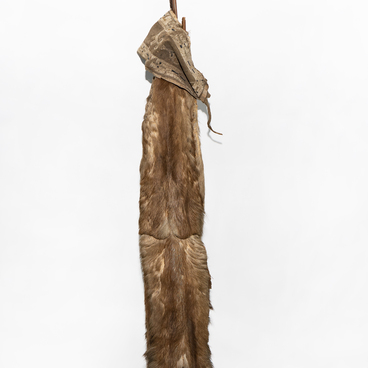The indigenous people of the Far East, the Nanais, actively used such hunting and combat weapons as bows in their lives. The blanks of the back were first dried for two to three days, hewn with an ax, shaped, and then bent on a wooden arc.
Sometimes the bow was reinforced with bone and horn overlays at the ends and the handle, which could also be decorated with patterns or personal property signs. A removable bowstring was put on the finished bow, which the peoples of Amur made using purchased silk threads. There were several ways to attach the bowstring; the Nanai people tied it through holes to the tips of the bow limbs.
All the peoples of the Russian Far East were engaged in hunting. They went after the big beast all year round. They hunted for meat and fat, skins and fur: skins, for example, were used to create shoes; crafts and jewelry were made from bones. The Nanai people hunted hoofed animals: wild boar, Manchurian wapiti, roe deer. During the hunt for furs, they tried to catch foxes, squirrels, hares, ermines, as well as sables.
Deer were the most attractive prey. Not only the meat and skin of these animals were highly valued, but also the intestines, stomach and tongue. Velvet antlers, that is, not calcified antlers of deer, were used to make medicines. The Nanai hunted mainly adults. They thanked the spirits for their successful catching, made sacrifices and asked for luck in hunting.
Customs forbade talking loudly during hunting, making noise in the taiga and while fishing, taking other people’s prey. Hunters were afraid to scare off the beast even by mentioning the upcoming hunting. This was discussed neither at home in the family nor on the way to the winter quarters, especially at the hunting site. It was forbidden to pronounce the names of animals.
The bow for hunting
large animals from the museum’s collection has curved limbs, a base carved from
brown wood. In the center of the bow there is a recess for fixing the archer’s
hand; the owner wrapped five turns of a leather ribbon around it. The ends of
the limbs are narrowed, a bowstring made of beige braided rope is attached to
them, in the center of which there are two knots. The item was made in the late
19th or early 20th century.




